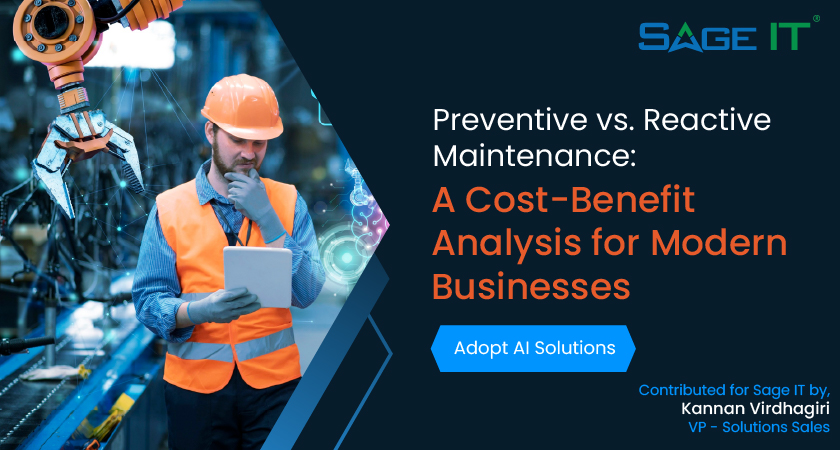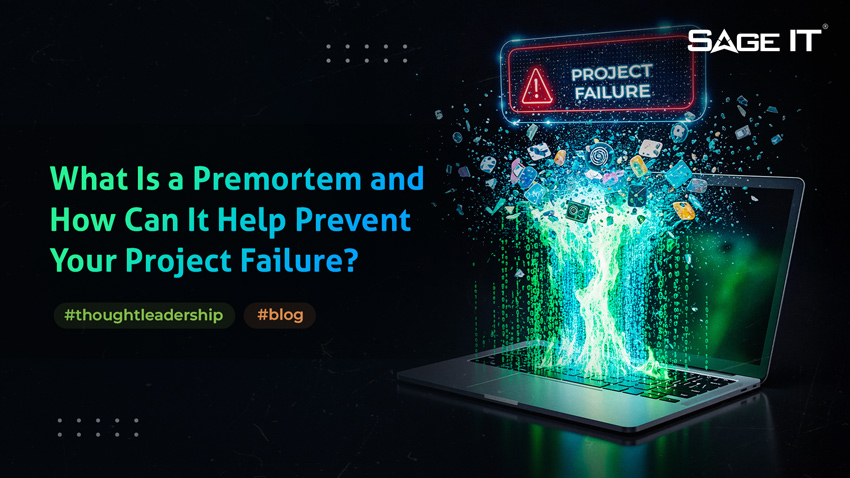“Preventive vs. Reactive Maintenance: A Cost-Benefit Analysis for Modern Businesses (with AI and Digital Twins)
In today’s fast-paced and competitive business environment, the maintenance strategy adopted by an organization can play a crucial role in its operational efficiency and financial health. While reactive maintenance has been the traditional approach, the emergence and integration of preventive maintenance strategies, empowered by AI and digital twins, have brought a significant shift in how businesses manage their assets and resources.
This blog provides a comprehensive cost-benefit analysis of preventive versus reactive maintenance, underscoring why a proactive approach, enhanced by AI and digital twins, is indispensable for modern businesses.
Understanding Reactive Maintenance
Reactive maintenance, also known as breakdown maintenance, involves repairing equipment when it fails. This approach can be likened to a ‘wait-and-see’ strategy, where actions are taken post-failure. While it might seem cost-effective in the short term, reactive maintenance often leads to higher costs in the long run. The unexpected downtime due to equipment failure can result in lost production time, which, according to a study by Aberdeen Group, can cost a company as much as $260,000 per hour. The Shift to Preventive Maintenance with AI and Digital Twins.
The Shift to Preventive Maintenance
Preventive maintenance, on the other hand, involves regular, planned maintenance activities to prevent equipment failure. This approach is based on the philosophy of ‘a stitch in time saves nine’. It involves regular inspections, upgrades, and timely interventions to keep equipment running efficiently. According to the U.S. Department of Energy, preventive maintenance can result in a 12-18% cost savings over reactive maintenance.
Cost-Benefit Analysis with AI and Digital Twins
Reduced Downtime and Enhanced Productivity: Preventive maintenance with AI and digital twins significantly reduces the likelihood of sudden equipment failures, which are common in a reactive maintenance approach. This reduction in downtime directly translates into enhanced productivity and operational efficiency. The Federal Energy Management Program (FEMP) estimates that a good preventive maintenance program with AI-driven insights can reduce downtime by 35-45%.
Longevity of Equipment: Regular maintenance extends the life of the equipment. A study by Jones Lang LaSalle found that preventive maintenance with AI-powered failure prediction can extend the life of a piece of equipment by up to 30%. This extended lifespan means fewer replacements and lower capital expenditure in the long run.
Energy Efficiency and Cost Savings: Properly maintained equipment, optimized by AI-driven energy models, operates more efficiently. The U.S. Department of Energy reports that preventive maintenance with AI-powered optimization can lead to a 10-30% reduction in energy consumption, which is not only good for the environment but also reduces energy costs significantly.
Safety and Compliance: Regular maintenance ensures that equipment operates safely, reducing the risk of accidents and ensuring compliance with regulatory standards. The Occupational Safety and Health Administration (OSHA) highlights that many workplace injuries are preventable with proper maintenance, further enhanced by AI-powered safety protocols.
Predictability in Budgeting: Preventive maintenance with AI-driven forecasting allows for better budget planning. Unlike reactive maintenance, where costs are unpredictable and can spiral unexpectedly, preventive maintenance involves fixed and predictable costs. This predictability aids in better financial planning and resource allocation.
Enhanced Customer Satisfaction: Efficient operations enabled by preventive maintenance with AI-driven optimization ensure timely delivery and higher quality of products or services, which in turn leads to increased customer satisfaction and loyalty.
Real-World Applications and Outcomes
In-Depth Manufacturing Company Case Study:
Background: A mid-sized manufacturing firm, specializing in automotive parts, had been relying on a reactive maintenance strategy, leading to frequent and unpredictable equipment breakdowns. This not only caused substantial production delays and impacted the company’s ability to meet customer deadlines but also resulted in escalated repair costs and stressed maintenance staff.
Challenge: The primary challenge was the high cost of downtime, affecting both the financial bottom line and the company’s reputation. The unpredictable nature of breakdowns hindered efficient planning and resource allocation, creating a reactive and stressful work environment.
Implementation of AI-Enhanced Preventive Maintenance:
Assessment with Digital Twins: The company initiated a comprehensive audit using digital twins, creating virtual replicas of all equipment. This allowed for an in-depth analysis of their maintenance history and identification of critical failure points in a risk-free, virtual environment.
Training in AI and Digital Twin Technologies: Maintenance staff underwent specialized training programs to learn preventive maintenance techniques and how to leverage AI and digital twin technology effectively.
Technology Adoption: The firm implemented advanced maintenance management software integrated with IoT sensors for real-time equipment monitoring. AI-powered predictive maintenance models were employed, utilizing data from the digital twins to anticipate potential equipment failures and schedule maintenance proactively.
Process Overhaul with AI Insights: Maintenance processes were redesigned to include regular inspections based on insights from AI algorithms. Predictive maintenance using these models and scheduled repairs during non-peak hours were planned to minimize operational disruption.
Results
Downtime Reduction: In the first year, the company observed a 30% reduction in downtime due to the early detection of potential issues through AI-driven predictive maintenance.
Cost Savings: Maintenance costs decreased by 25%, attributed to the more efficient scheduling of maintenance and the reduced need for emergency repairs.
Return on Investment: The initial investment in preventive maintenance technology and training was offset by these savings, confirming the financial viability of this approach.
Broader Impacts:
Employee Morale: The transition to a proactive work culture, empowered by AI and digital twin technology, led to improved job satisfaction and reduced stress among maintenance staff.
Customer Satisfaction: Enhanced reliability in meeting deadlines improved customer satisfaction and strengthened the company’s market reputation.
Environmental Impact: The AI-optimized maintenance led to more energy-efficient equipment operation, contributing to a lower carbon footprint and aligning with sustainability goals.
By integrating AI and digital twin technology into their preventive maintenance strategy, the manufacturing firm not only realized significant financial benefits but also enhanced operational reliability, employee well-being, customer satisfaction, and environmental sustainability. This case study exemplifies the strategic value and multifaceted advantages of adopting a proactive, technology-driven approach in modern manufacturing.
Implementation in Modern Businesses
To effectively implement a preventive maintenance program with AI and digital twins, businesses should:
- Conduct a thorough assessment of their current maintenance practices.
- Invest in training and development of their maintenance team on AI and digital twin technologies.
- Utilize technology, such as AI-powered maintenance management software and digital twin platforms, to schedule, track, and optimize maintenance tasks.
- Regularly review and adjust the maintenance schedule based on equipment performance data, AI-driven insights, and other operational data.
Conclusion
The shift from reactive to preventive maintenance with AI and digital twins is not just a change in operational strategy, but a fundamental shift in the business mindset towards a more sustainable, efficient, and data-driven model. The initial investment in such a program might seem higher than continuing with a reactive approach. However, the long-term benefits – reduced downtime, extended equipment life, energy savings, safety, budget predictability, and customer satisfaction – far outweigh the initial costs. In an era where operational efficiency and sustainability are key drivers of business success, preventive maintenance emerges not just as a recommended practice, but as a critical component of strategic business management.
For CEOs and business leaders, the decision to invest in preventive maintenance is a strategic one, aligning with the broader goals of operational excellence, cost-effectiveness, and long-term sustainability. It’s an investment in the future health and competitiveness of the business.
If you have any further questions or need assistance, feel free to reach out to us at marketing@sageitinc.com
Contributed for Sage IT by,
Kannan Virdhagiri
VP – Solutions Sales











